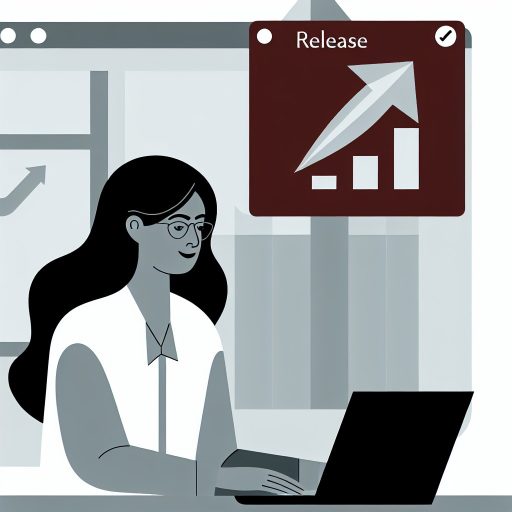Introduction
A full stack developer is a professional capable of working on both the front-end and back-end of websites and applications.
They are essential in the tech industry for their versatility and ability to handle various tasks efficiently.
Role and Responsibilities of Full Stack Developers
Full stack developers start their day by reviewing project requirements and planning tasks accordingly.
They may work on creating user interfaces, developing server-side logic, and managing databases.
They collaborate with designers to ensure the visual elements align with functionality.
Testing and debugging code are vital parts of their routine.
These steps ensure that the product meets quality standards.
Full stack developers constantly stay updated with the latest technologies and best practices to enhance their skills.
They may attend meetings to discuss project progress and provide updates to team members.
Communication plays a crucial role as they interact with team members, clients, and stakeholders.
They may also mentor junior developers, sharing their knowledge and expertise in the field.
Problem-solving is a key aspect of their job when they encounter challenges that require innovative solutions.
They optimize applications for performance and scalability to improve user experience.
Documenting their work is essential for future reference and to ensure seamless collaboration within the team.
They may also be involved in project planning and brainstorming sessions to contribute creative ideas.
Daily Workflow and Skills of Full Stack Developers
From designing interfaces to coding functionalities, a full stack developer’s day is packed with diverse tasks.
These tasks require a high level of skills and versatility.
Their ability to handle both front-end and back-end development makes them valuable assets in the tech industry.
Responsibilities of a Full Stack Developer
- Develop front end website architecture using web-based technologies (HTML, CSS, JavaScript)
- Build backend website applications using server-side languages (Node.js, Python, Ruby, etc.)
- Manage databases, server configurations, and hosting environments
As a full stack developer, you play a crucial role in designing, implementing, and maintaining websites and applications.
Your responsibilities encompass a wide range of tasks.
Transform Your Career Today
Unlock a personalized career strategy that drives real results. Get tailored advice and a roadmap designed just for you.
Start NowThese tasks include creating the user interface and managing the server-side logic and database systems.
Let’s take a closer look at what a typical day in the life of a full stack developer might entail.
Morning
Your day typically starts with a quick review of your tasks and priorities.
You may have meetings scheduled with the design team to discuss the layout and functionality of a new web application.
As a full stack developer, you are involved in every stage of the development process, from planning to deployment.
After the meeting, you dive into coding.
You work on the front end website architecture using HTML, CSS, and JavaScript to create responsive and visually appealing web pages.
Your goal is to ensure a seamless user experience across different devices and browsers.
Next, you switch gears to backend development.
You write server-side code in languages like Node.js, Python, or Ruby to handle data processing, user authentication, and server interactions.
You leverage your knowledge of database management systems to optimize data storage and retrieval.
Afternoon
After a quick lunch break, you focus on testing and debugging.
You run unit tests to identify and fix errors in your code.
You also collaborate with QA testers to ensure the functionality and performance of the website or application meet the requirements.
Once the testing phase is complete, you deploy the application to a staging environment for further evaluation.
You fine-tune the server configurations and hosting settings to guarantee smooth performance and security.
You may also work on integrating third-party APIs for additional features.
In the afternoon, you might participate in a code review session with your team members.
You provide feedback on their code and receive suggestions on improving your own.
This collaborative effort helps maintain code quality and consistency across the project.
Transform Your Career Today
Unlock a personalized career strategy that drives real results. Get tailored advice and a roadmap designed just for you.
Start NowEvening
As the day comes to a close, you wrap up your tasks and prepare for the next day.
You document your progress, including any challenges you encountered and solutions you implemented.
You update your task board with new assignments and priorities for the following day.
Before logging off, you take a moment to research new technologies and trends in web development.
Continuous learning is essential in this field because technologies evolve rapidly.
You explore online resources, forums, and tutorials to enhance your skills and stay up to date with industry best practices.
Finally, you sign off for the day, knowing that your work as a full stack developer plays a vital role in shaping the digital landscape.
Your ability to bridge the gap between front end and backend development ensures websites and applications function seamlessly.
This delivers value to users and drives business success.
Collaborating with the team
- Working closely with designers and other developers to implement and maintain web applications
- Participating in code reviews and providing feedback on others' work
- Communicating effectively with team members to ensure project goals are met
Uncover the Details: Future Trends in the Technology Evangelist Role
Problem-solving and Troubleshooting
- Identifying and resolving technical issues that arise during development.
- Debugging code to fix bugs and errors.
- Finding innovative solutions to technical challenges.
One of the key responsibilities of a full stack developer is problem-solving and troubleshooting.
In this role, developers are tasked with identifying and resolving technical issues during development.
These issues can include front-end interface, back-end functionality, or database integration problems.
When bugs and errors occur in code, full stack developers debug and fix these issues.
This process involves reviewing code carefully, finding the problem source, and implementing a fix.
Debugging is critical because it ensures software functions properly and offers a smooth user experience.
Besides fixing issues, full stack developers find innovative solutions to technical challenges.
This work could involve adding new features, optimizing code, or integrating new technologies.
By staying updated on industry trends and best practices, developers deliver creative and advanced software solutions.
Uncover the Details: Essential Database Management Skills for Architects
Transform Your Career Today
Unlock a personalized career strategy that drives real results. Get tailored advice and a roadmap designed just for you.
Start NowWhile the day-to-day responsibilities of a full stack developer can vary by project or company, there are some common tasks they typically perform.
Let us take a closer look at what a full stack developer does in a typical day.
Planning and Coordination
One of the first things a full stack developer does in the morning is to plan out their day.
They may meet with the project manager to discuss task priorities and deadlines.
This helps ensure that everyone is on the same page and that work progresses smoothly.
Front-end Development
Throughout the day, a full stack developer works on the front-end of the application.
This involves designing user interfaces, creating web pages, and implementing features that users interact with.
They use languages like HTML, CSS, and JavaScript to bring the design to life.
Back-end Development
After completing front-end tasks, a full stack developer shifts their focus to back-end development.
This involves working on the server side of the application, managing databases, and implementing algorithms to process data.
They use languages like Python, Ruby, or Java, along with frameworks such as Django or Spring.
Continuous Learning and Skills Development
- Keeping up-to-date with the latest industry trends and technologies.
- Attending workshops, training sessions, and conferences to enhance skills.
- Experimenting with new tools and frameworks to improve efficiency and productivity.
Full stack developers are lifelong learners who understand the importance of staying current with technology.
They regularly participate in workshops, training sessions, and conferences to expand their knowledge and skills.
Additionally, they experiment with new tools and frameworks to work more efficiently and produce higher-quality code.
A full stack developer’s day includes a variety of tasks that require a diverse set of skills.
From planning and coordination to front-end and back-end development, these professionals play a crucial role in bringing digital products to life.
Continuous learning and skills development form essential parts of their routine, ensuring they stay ahead in a rapidly evolving industry.
Gain More Insights: Understanding Business Requirements as an Application Analyst
Project management and time management:
- Planning and prioritizing tasks to meet project deadlines
- Managing multiple projects simultaneously
- Collaborating with project managers to ensure projects are completed on time and within budget
As a full stack developer, project management and time management skills are crucial.
They ensure efficient workflow.
Transform Your Career Today
Unlock a personalized career strategy that drives real results. Get tailored advice and a roadmap designed just for you.
Start NowThese skills lead to successful project delivery.
Here is a glimpse into what a day in the life of a full stack developer looks like.
This focuses on managing projects and time effectively.
Planning and prioritizing tasks to meet project deadlines
One key responsibility of a full stack developer is to plan tasks effectively.
This helps to meet project deadlines.
The developer breaks down the project into smaller manageable tasks.
They estimate the time required for each task.
A timeline for completion is then created.
By setting clear objectives and milestones, the developer can track progress.
Adjustments are made as needed to stay on track.
Effective planning ensures projects are delivered on time and within budget.
This meets client expectations and maintains a positive reputation.
Managing multiple projects simultaneously
Full stack developers often work on multiple projects at the same time.
They juggle different tasks and deadlines regularly.
Excellent time management skills are required to allocate time effectively.
Tasks are prioritized based on urgency and importance.
Developers ensure that all projects progress smoothly.
Managing multiple projects maximizes efficiency and productivity.
Downtime on one project is used to work on another.
This approach provides diverse experiences and challenges.
Transform Your Career Today
Unlock a personalized career strategy that drives real results. Get tailored advice and a roadmap designed just for you.
Start NowIt keeps the developer engaged and constantly learning new skills.
Collaboration with project managers to ensure timely and budgeted completion
Collaboration with project managers is essential for full stack developers.
This ensures projects are completed on time and within budget.
Project managers provide oversight, guidance, and support.
They help developers navigate challenges and make informed decisions.
This keeps developers focused on project goals.
By working closely with project managers, developers align their work with the project plan.
They receive feedback and direction regularly.
Developers address any issues or bottlenecks that arise promptly.
This collaborative approach promotes transparency and accountability.
It creates a shared commitment to project success.
Importance of project and time management skills for full stack developers
Project management and time management are critical skills for developers.
These skills allow effective planning, prioritizing, and executing of tasks.
Developers meet project deadlines consistently by mastering these skills.
They can enhance productivity and efficiency significantly.
Overall performance improves, making developers valuable assets.
Find Out More: Big Data Engineering Projects: Examples and Ideas

Testing and quality assurance:
- Writing unit tests to ensure code quality and reliability
- Conducting thorough testing of applications to identify and fix any issues
- Implementing best practices for quality assurance to deliver high-quality products to clients
As a full stack developer, a significant part of my day revolves around testing and quality assurance.
This crucial aspect ensures that the products we deliver are robust, reliable, and bug-free.
Let’s dive into what this entails:
Transform Your Career Today
Unlock a personalized career strategy that drives real results. Get tailored advice and a roadmap designed just for you.
Start NowWriting unit tests to ensure code quality and reliability
Unit tests are crucial in software development as they help validate individual units or components of a system.
As a full stack developer, I write unit tests to ensure that each part of the codebase functions correctly and efficiently.
These tests help catch any bugs or errors early in the development process, making it easier to fix them.
Conducting thorough testing of applications to identify and fix any issues
Once the code is written, it’s time to test the entire application to identify any issues or bugs.
This involves performing functional, integration, and performance testing to ensure that the application works as intended.
I meticulously review every feature and functionality to catch any discrepancies or errors that may affect the user experience.
Implementing best practices for quality assurance to deliver high-quality products to clients
Quality assurance is a critical part of the development process, and as a full stack developer, I ensure that best practices are implemented to deliver top-notch products to our clients.
This includes following coding standards, using code review tools, and adhering to industry best practices.
By prioritizing quality assurance, we can guarantee that our clients receive a reliable and high-quality product that meets their expectations.
The importance of testing and quality assurance in full stack development
Testing and quality assurance play a pivotal role in a full stack developer’s day-to-day activities.
By writing unit tests, conducting thorough testing, and implementing best practices for quality assurance, we can deliver exceptional products that meet our clients’ needs and expectations.
Client communication and feedback
- Gathering requirements from clients and stakeholders to understand project goals
- Providing regular updates on project progress and seeking feedback from clients
- Incorporating client feedback to improve the final product and meet client expectations
Client communication and feedback play a crucial role in the life of a full stack developer.
It involves various tasks and responsibilities that revolve around ensuring that the project meets the client’s needs and expectations.
Let’s delve into what this aspect of a full stack developer’s day-to-day activities looks like.
Gathering requirements from clients and stakeholders to understand project goals
One of the initial tasks in client communication is gathering requirements from clients and stakeholders.
This involves having meetings, conducting interviews, and analyzing documentation to understand the project goals and objectives.
It’s essential to have a clear understanding of what the client wants to achieve with the project.
Providing regular updates on project progress and seeking feedback from clients
Once the project kicks off, the full stack developer is responsible for providing regular updates on the progress of the project to the client.
This can be in the form of status reports, emails, or meetings.
It is important to keep the client informed about the project’s status and any challenges that may arise.
Transform Your Career Today
Unlock a personalized career strategy that drives real results. Get tailored advice and a roadmap designed just for you.
Start NowSeeking feedback from clients is also a crucial part of client communication.
This allows the client to provide input on the project, make suggestions for improvements, and address any concerns they may have.
It is essential to create an open line of communication with the client to ensure their satisfaction with the final product.
Incorporating client feedback to improve the final product and meet client expectations
Another key aspect of client communication is incorporating client feedback into the project.
This involves taking the feedback received from the client, analyzing it, and making necessary changes to the project to improve its quality.
By incorporating client feedback, the full stack developer ensures that the final product meets the client’s expectations and requirements.
Effective communication with clients, gathering requirements, providing updates, and incorporating feedback ensures the success of the project.
These activities contribute greatly to the satisfaction of the client.
Recap of the Main Responsibilities and Tasks of a Full Stack Developer
Full stack developers are responsible for front-end and back-end development tasks.
They design user interfaces, develop server-side logic, and manage databases.
Importance of Versatility and Problem-Solving Skills in Full Stack Development
Versatility is crucial for full stack developers to navigate different technologies and platforms effectively.
Problem-solving skills help them deliver efficient solutions across diverse development challenges.
Encouraging Aspiring Developers to Pursue a Career in Full Stack Development
Aspiring developers should embrace the challenge of mastering a wide range of technologies.
Continuous learning and growth are essential to excel in this dynamic field.
Additional Resources
Day in the Life of a Software Developer | Main Responsibilities
A day in the life of a Palantir engineer | Palantir Blog
[E-Books for Sale]
The Big Book of 500 High-Paying Jobs in America: Unlock Your Earning Potential
$19.99 • 500 High-Paying Jobs • 330 pages
Explore 500 high-paying jobs in America and learn how to boost your career, earn more, and achieve success!
See All 500 High-Paying Jobs of this E-Book
1001 Professions Without a Degree: High-Paying American Jobs You Can Start Now
$19.99 • 1001 Professions Without a Degree • 174 pages
Discover 1001 high-paying jobs without a degree! Unlock career tips, skills, and success strategies for just $19.99!




